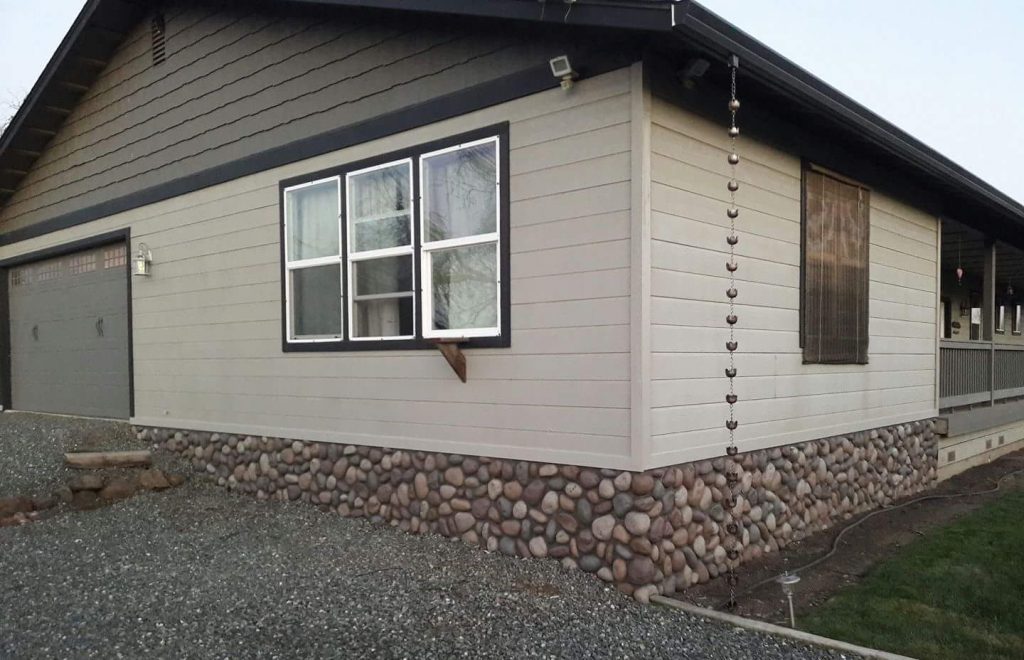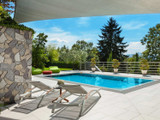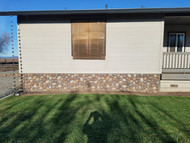
We have many different styles of panels. While they all look realistic, when choosing a style it's important to consider the context of your design. This project using River Rock panels to cover a home's foundation is a perfect example of how to match your design to the best panel.
"But do they look real?"
That's probably the #1 question people ask about our faux stone, brick and wood panels - and they're normally delighted when they find out the answer. Whether we send out a sample, or they wait to receive their order, customers are always pleasantly surprised to discover that yes, the panels have a highly realistic appearance.
They look so natural that it's generally impossible to tell them apart without reaching out and touching them. But even with that high level of realism, there are additional things you can do to make the look even more convincing.
One of the most important is something designers call 'context.' When deciding to add panels to your home design project - whether on your interior or outdoors - it's important to think about how the texture you've chosen would fit into in a real-world setting.
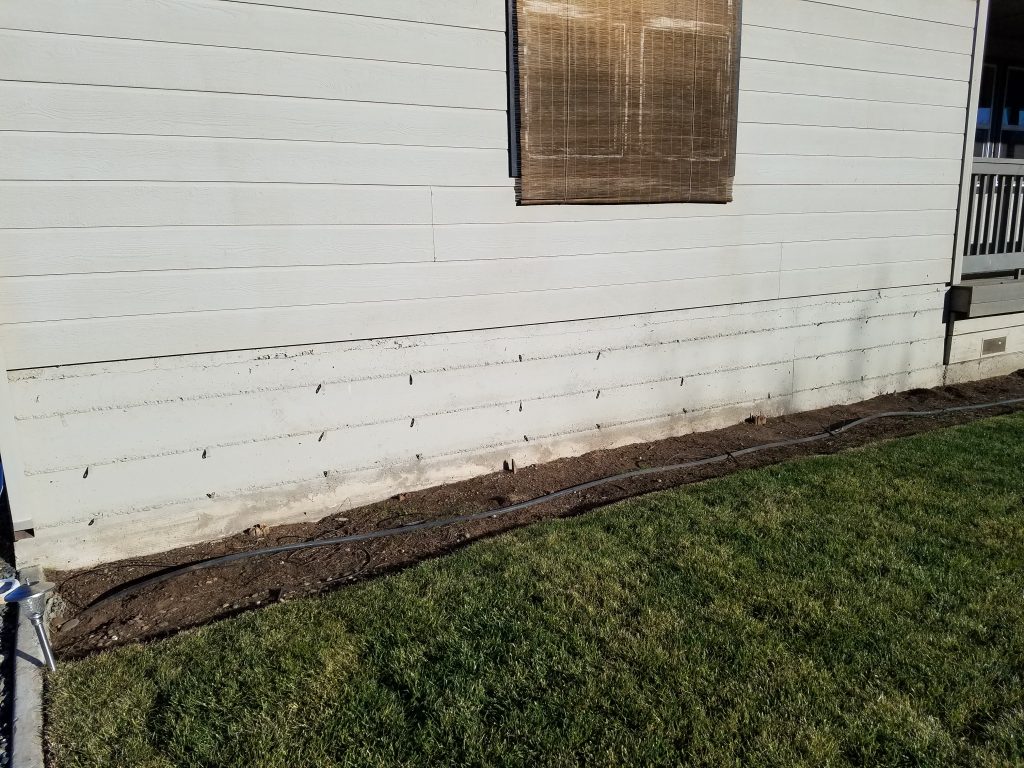 BEFORE: The drab foundation blocks needed to be covered; but not every style of panel would have looked appropriate.
BEFORE: The drab foundation blocks needed to be covered; but not every style of panel would have looked appropriate.
The project we're sharing pictures of today is a great example of that. Sent in by customer Sara, the pictures show River Rock panels used to side her bungalow's foundation. It's a fairly common use of the panels, but the reason we think Sara's project looks so great is because she specifically chose the River Rock style; and in the 'context' of her home, they look amazing.
In her locale, river rocks are actually quite a common sight. Worn smooth and round by the current, these rocks are an attractive and also practical building material that you'll find in many historic buildings and structures in the area. By choosing River Rock, Sara ties her home's foundation into the common look of her community; lending the siding even more realism as a result.
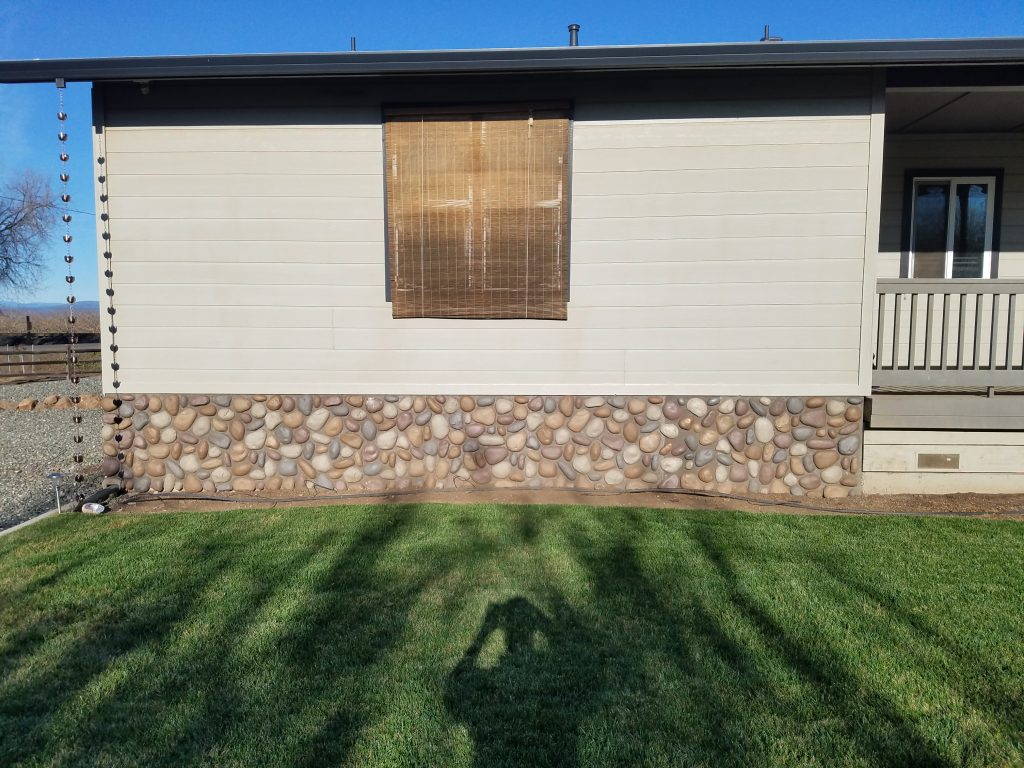 AFTER: Because river rock is used locally as a common building material, Sara's foundation looks even more authentic.
AFTER: Because river rock is used locally as a common building material, Sara's foundation looks even more authentic.
To put it another way - instead of somebody looking at Sara's house and thinking: "Wow, that's nice siding, I wonder if it's real" they'll look at it and automatically assume the siding is authentic, because they have seen so many local structures and buildings using the same river rock elements.
But Sara doubled-down on that with the color of her home - using subdued and pale grays and browns to mirror the colors of the river rocks.
It's that 'context' that makes all the difference - choosing a style of panel that is congruent with the local architecture, as well as the colors and features of your home. In contrast, Sara could have picked one of our other styles of panel - like White Old Chicago Brick, for example - but it most likely wouldn't have looked 'right'.
So take a page out of Sara's book when choosing your panels; and make sure they're appropriate for where you're going to install them. It really goes all the way to turning a great-looking project into a world-class one.
Shop Related Products